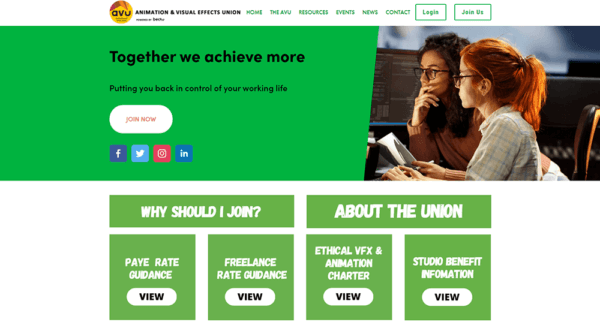“That’s the business model of animation in this country: it’s a race to the bottom” – Understanding Creativity Without a Voice
In an age where Film and TV is incapable of existing without animation and VFX, these mediums have yet to have a voice when discussing their own working standards. From constantly changing wages, to job insecurity and exploitation, some animators are expected to think that this is the norm of working in the UK. Creatives and union workers have come together to express what it is like to work while unrepresented.
In late 2019, the Broadcasting, Entertainment, Communications and Theatre Union (BECTU) formed the Animation and VFX Union (AVU). Three years later AVU, having 500 (an estimate) members, is still not recognised as a union. Because of this indecisive status, union jobs are non-existent and companies have managed to get away with poor practices.
Joe Pavlo, chairman of the Animation and VFX Union and VFX Artist, has had 10 years of experience in dealing with the mistreatment of animation and VFX workers. When talking about it, Joe was in between frustration (for the tenth year in a row that he has spoken out) and disbelief (at the lack of voluntary change from the industry), saying: “Our animation studios and visual effects facilities are treating all the artists just like a resource that they can turn off and on.
“They should be fighting with each other to entice and retain this talent. They should be saying, ‘Come work with us, we have the best pensions in the industry.’ or ‘Come work with us, we’ll give you extra holiday time.’ ‘Come work with us, we pay better than others.’
“Nobody does that, everybody just hires people and then dumps some at the end of a project.
“…That’s the business model of animation in this country: it’s a race to the bottom. That means cutting, making very small cuts, sometimes very large cuts, to whatever benefits the company.”
The current government’s antagonistic attitude does not help in making things easier, with the cost of living crisis and job insecurity only making situations even more dire for animators. Even after diversifying studios, writing guides for rates and helping in guiding junior animators, AVU is only capable of making slow changes. As such, they are pushing for awareness of their existence, as well as a message for studios to improve their treatment.
“The message we’re trying to get out now is that, when you get people to do 80 hours a week, then those are bad employees.” Says Pavlo.
“They are tired, they are unhealthy, and they can’t work… they need to realise that unionisation makes animators more productive. We (AVU) are trying to help the facilities; we’re trying to save them from themselves.
George Crosbie, a character designer specialising in 2D animation based in Liverpool, has gone through the experience of having his idealised dream of working in animation turn bitter at reality. “Most of us enter pretty wide-eyed and hopeful for the possibilities of where studios can take you, but as your experience builds the problems become more and more apparent.”
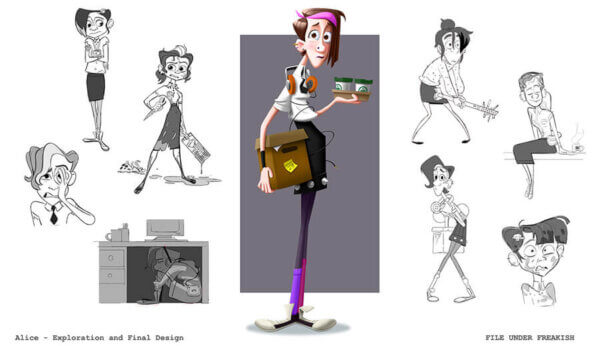
Character designs by George Crosbie
Obviously, not everyone can enjoy what they do forever, however, animation is a medium that depends on a team’s spirit for it to work. The industry is in an era where it forgets that quality can sometimes be better than quantity. Because of this, George and his peers were not only accumulating experience, but also “war stories”.
He said: “There was a period of a few weeks where I and the rest of the small design team I was on were expected to work sometimes 4 hours past the end of the normal workday, as we waited for the head of the company to arrive to personally approve the work we were making.
“That person treated it extremely casually with little regard to the extra, unpaid hours we were putting in… I realised how badly people at my job level could be treated, and that the only real protest to that kind of treatment was to leave a studio completely.”
George had the experience of learning and studying his craft better, but at the same time uncaring higher ups made the job only harder, to the degree where the only solution was, in George’s words, having “an experience of talking to a higher-up of my concerns about an art department lead they had hired who was providing poor direction.
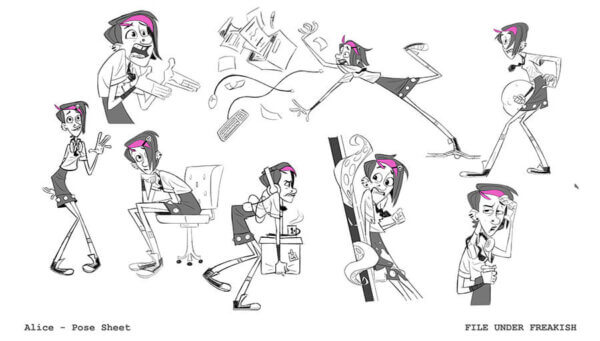
Character designs by George Crosbie
“The talk was not kept confidential, and I was taken aside by that lead and reprimanded for voicing my concerns. When that person was later let go only a few weeks later it was clear my concerns were valid. But, by that point I had lost faith in the leadership there for breaking my anonymity, to a degree already decided that I would not be staying if offered more work past the end of my contract.”
Animators use the growing discussion spaces in social media to bring awareness and voice their stories, so that other starting artists can be prepared before joining a studio. George said: “A silver lining is that experiences like these are much more commonly shared nowadays, through articles like this for instance, and I hope it will give future animators in the UK a better ability to control their careers by having these expectations going into them.”
Working without unions can not only change the general working conditions animators get, but their income as well. A lack of understanding from clients, and from producers alike can lead to projects where budgets are so low, animators are forced to lower their rates. A problem which is not as normal in the US as it is in the UK.
Izzy Burton, an artist and director based in Brighton who has earned five times more abroad than in the UK, confesses sadness in how the excitement towards US jobs is higher than those in her home country: “It’s just wild when you hear the difference in budgets between projects and what even the clients expect can be made with that amount of money.
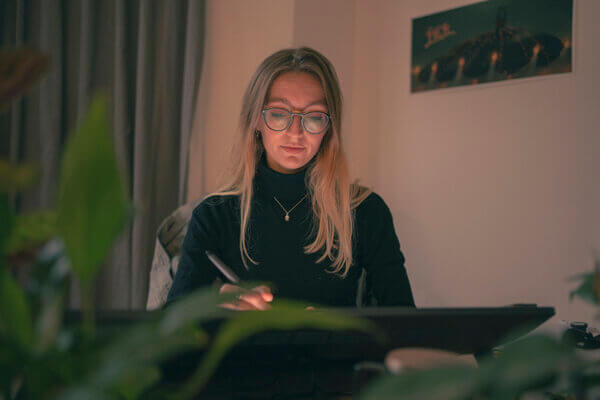
Izzy Burton
I think maybe we need to be better at letting the clients and agencies know how much things cost to make because there’s a discrepancy there.”
AVU has helped to offer guidance to freelance animators on rates and how to ask for budgets, but in an industry where animators fear the idea of being blacklisted because of being “rebellious”, it is hard for these negotiations to even be broached. Sexism and general discrimination only make this problem even harder to solve.
Izzy, calling herself lucky for working with studios that represent women fairly has, like most animators, faced these discriminatory situations: “I’ve had a few of the classic semi-abusive things of men just acting weird in the workplace.
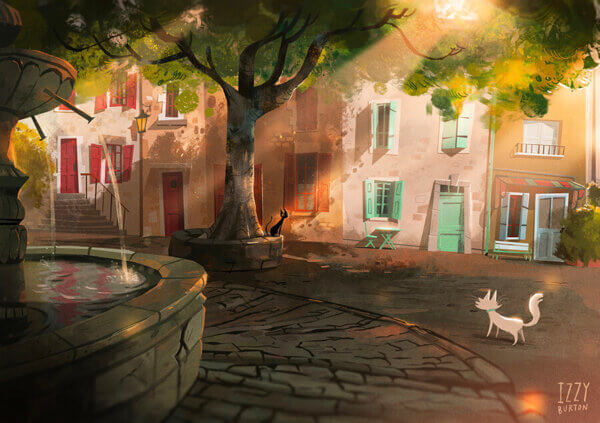
Artwork, by Izzy Burton
“And in that situation, it is the same as speaking up and being worried about being blacklisted, because I know that those guys are seen as friends of the studio, and I never wanted to say anything in case they picked that person over me.”
However, as much as a lack of unions affects some, and others experience the greed of companies, it is also normal to see that some animators manage to carry on in the industry. Through their own experience, skill, and an understanding team, some senior animators have found jobs and prosperity.
Steve Boot, Director and Stop Motion animator based in Manchester, has managed to stay as a local freelancer for 20 years. With experience on dealing with multiple companies and studios, he thinks there needs to be a better understanding from animators towards the company’s thinking.
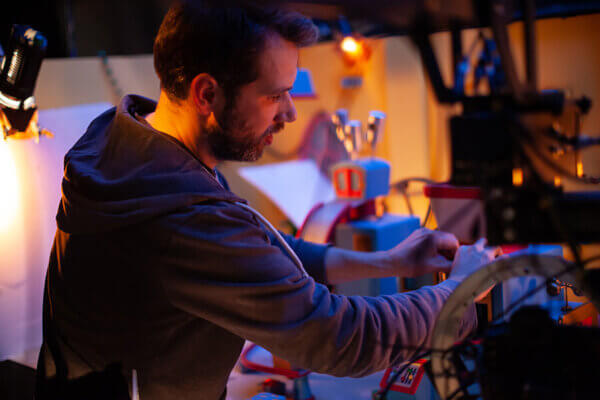
Steve Boot
He said: “The companies kind of want to get paid as much as possible but they also want to bring in people, so they put together the budgets as best they can. So, if their clients are kind of asking for more and more, then the company is going down to their people and asking more of them.”
Senior animators also understand that, in freelance animation, workers must be able to depend on their own judgement when it comes to a company’s wrongdoings: “You need to kind of like figure it out yourself, ‘Am I being taken advantage of? What am I going to gain from this? If there is something to gain and it’s not necessarily money, then is it a positive thing?’”
In a creative industry with no unions, animators can only do that: rely on themselves and their peers. It is a gamble to play, as it could lead to good or bad experiences. However, AVU has and can continue to improve the experience for animators nationwide, either by pushing for diversity, bringing awareness to working conditions or advising about better rates. If it gets ahold of more members, and is finally recognised, then maybe the toxic norms in the industry can finally be seen as a thing of the past.


